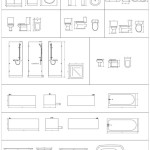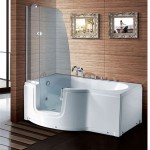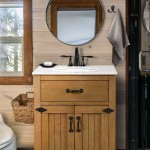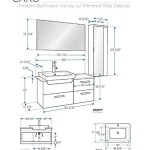How to Move Water Pipes in a Bathroom
Moving water pipes in a bathroom can be a daunting task, but it's one that can be done with the right tools and knowledge. Whether you're adding a new fixture or rerouting pipes to improve the layout, following the steps below can help you complete the job safely and efficiently.
1. Gather the Necessary Tools
Before you start, make sure you have all the tools you need. This includes:
- Pipe wrench
- Adjustable wrench
- Hacksaw
- Measuring tape
- Level
- Soldering torch (if using copper pipes)
- Solder
- Flux
- Pipe cutter (if using PEX or CPVC pipes)
2. Turn Off the Water Supply
The first step is to turn off the water supply to the bathroom. This is usually done by closing the main water valve, which is typically located in the basement or crawlspace. If you can't find the main water valve, you can turn off the water supply to the bathroom by closing the individual valves under the sink and toilet.
3. Drain the Pipes
Once the water supply is turned off, you need to drain the pipes. This will prevent water from leaking out when you cut the pipes. To drain the pipes, open all the faucets and showerheads in the bathroom and let the water run until it stops. You may also need to use a wet/dry vacuum to suck the water out of the pipes.
4. Cut the Pipes
Once the pipes are drained, you can start cutting them. Use a hacksaw to cut copper pipes and a pipe cutter to cut PEX or CPVC pipes. Be sure to cut the pipes squarely and cleanly.
5. Measure and Cut the New Pipes
Next, measure and cut the new pipes to the desired length. Be sure to leave enough extra length so that you can connect the pipes to the fixtures.
6. Connect the Pipes
Once the new pipes are cut, you can start connecting them. If you're using copper pipes, you will need to solder the connections. If you're using PEX or CPVC pipes, you can use push-fit connectors. Be sure to follow the manufacturer's instructions for connecting the pipes.
7. Test the Pipes
Once the pipes are connected, turn on the water supply and check for leaks. If there are any leaks, tighten the connections or replace the damaged pipes.
8. Finish the Job
Once the pipes are tested and there are no leaks, you can finish the job by installing the fixtures and turning on the water supply. Be sure to check for leaks again after the fixtures are installed.
Tips
- If you're not comfortable moving water pipes yourself, you can hire a plumber to do the job for you.
- Be sure to wear safety glasses and gloves when working with water pipes.
- If you're soldering copper pipes, be sure to use a well-ventilated area and follow the manufacturer's instructions for soldering.
- If you're using PEX or CPVC pipes, be sure to use the correct push-fit connectors for the type of pipe you're using.

Proper Ways To Relocate Plumbing When Renovating A Bathroom Kevin Szabo Jr Services Local Plumber Tinley Park Il

Rerouting Water Pipes Bathroom Plumbing Handy Mandy

Plumbing Water Lines Handyman Corporate

How To Move A Waste Pipe Step By Guide

How To Move Bathroom Toilet Drain Line A Few Feet Home Remodeling Plumbing Modifications Part 1

Enlarging And Moving A Shower In Bathroom Remodel Easyrenovation

Everything You Need To Know About Moving Bathroom Plumbing

How I Moved Copper Water Lines Over A Concrete Floor Az Diy Guy

Why Your Pipes Are Making Loud Noises

Core The Bathroom Wall To Move Toilet







